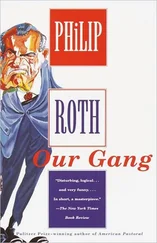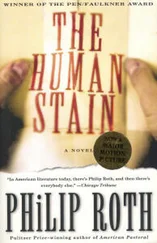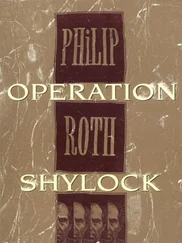He did not feel as though he were playing at something. He did not feel as though he were trying to make something come true. This was what was true, this intensity of connection with those bones.
His mother had died at eighty, his father at ninety. Aloud he said to them, "I'm seventy-one. Your boy is seventy-one." "Good. You lived," his mother replied, and his father said, "Look back and atone for what you can atone for, and make the best of what you have left."
He couldn't go. The tenderness was out of control. As was the longing for everyone to be living. And to have it all all over again.
He was walking back through the cemetery to his car when he came upon a black man digging a grave with a shovel. The man was standing about two feet down in the unfinished grave and stopped shoveling and hurling the dirt out to the side as the visitor approached him. He wore dark coveralls and an old baseball cap, and from the gray in his mustache and the lines in his face he looked to be at least fifty. His frame, however, was still thick and strong.
"I thought they did this with a machine," he said to the gravedigger.
"In big cemeteries, where they do many graves, a lot of times they use machines, that's right." He spoke like a Southerner, but very matter-of-factly, very precisely, more like a pedantic schoolteacher than a physical laborer. "I don't use a machine," the gravedigger continued, "because it can sink the other graves. The soil can give and it can crush in on the box. And you have the gravestones you have to deal with. It's just easier in my case to do everything by hand. Much neater. Easier to take the dirt away without ruining anything else. I use a real small tractor that I can maneuver easily, and I dig by hand."
Now he noticed the tractor in the grassy pathway between the graves. "The tractor's for what?"
"Use that to haul the dirt away. I've been doing it long enough that I know how much dirt to take away and how much dirt to leave. The first ten trailers of dirt I take away. Whatever's left I throw up on boards. I put down plywood boards. You can see 'em. I lay down three plywood boards so the dirt doesn't sit on the grass itself. The last half of the dirt I throw out onto the boards. To fill in afterwards. Then I cover everything with this green carpet. Try to make it nice for the family. So it looks like grass."
"How do you dig it? Mind if I ask?"
"Nope," said the gravedigger, still a couple feet down, standing where he'd been digging. "Most folks don't care. With most folks, the less they know the better."
"I want to know," he assured him. And he did. He did not want to go.
"Well, I have a map. Shows every grave that's ever been sold or laid out in the cemetery. With the map you locate the plot, purchased who knows when, fifty years ago, seventy-five years ago. Once I got it located I come here with a probe. There it is. That seven-foot spike on the ground. I take this probe and I go down two or three feet, and that's how I locate the next grave over. Bang – you hit it and you hear it. And then I take a stick and I mark on the ground where the new grave is. Then I have a wood frame that I lay down on the ground and that's what I cut the soil to. I take an edger first and I cut the sod to the size of the frame. Then I size it down, make one-foot-square pieces of sod, and put them back of the grave, out of sight – because I don't want to make any kind of mess where the funeral will be. The less dirt, the easier it is to clean up. I don't ever want to leave a mess. I lay down a board back of the grave next to it, where I can carry the squares of sod to it on the fork. I lay 'em like a grid so it looks like where I took ' em out. That takes about an hour. It's a hard part of the job. Once I've done that, then I dig. I bring the tractor over, and my trailer attached. What I do is, I dig first. That's what I'm doing now. My son digs the hard part. He's stronger than I am now. He likes to come in after I'm done. When he's busy or not around I dig the whole thing myself. But when he's here I always let him dig the harder part. I'm fifty-eight. I don't dig like I used to. When he started I had him here all the time, and we'd take turns digging. That was fun because he was young and it gave me time to talk to him, just the two of us alone."
"What did you talk to him about?"
"Not about graveyards," he said, laughing hard. "Not like I'm talking to you."
"What then?"
"Things in general. Life in general. Anyway, I dig the first half. I use two shovels, a square shovel when the digging is easy and you can take more dirt, and then I use just a round pointed shovel, just a standard shovel. That's what you use for basic digging, a regular common shovel. If it's easy digging, especially in the spring when the ground isn't real solid, when the ground is wet, I use the big shovel and I can take out big shovelfuls and heave 'em into the trailer. I dig front to back, and I dig a grid, and as I go I use my edger to square the hole. I use that and a straight fork – they call it a spading fork. I use that to edge too, to bang down, cut the edges, and keep it square. You've got to keep it square as you go. The first ten loads go into the trailer and I take it over to an area in the cemetery where it's low and where we're filling that area, and I dump the trailer, come back, fill it up again. Ten loads. At that point I'm about halfway. That's about three foot."
"So from start to finish, how long does it take?"
"It'll take about three hours to do my end. Could even take four hours. Depends on the dig. My son's a good digger – takes him about two and a half hours more. It's a day's work. I usually come in about six in the morning, and my son comes in around ten. But he's busy now and I tell him he can do it when he wants. If the weather's hot, he'll come at night when it's cooler. With Jewish people we only get a day's notice, and we got to do it quick. At the Christian cemetery" – he pointed to the large, sprawling cemetery that lay across the road – "the undertakers will give us two or three days' notice." "And you been doing this work how long?" "Thirty-four years. A long time. It's good work. It's peaceful. Gives you time to think. But it's a lot of work. Starting to hurt my back. One day soon I'm turning it all over to my son. He'll take over and I'm moving back to where it's warm year round. Because, don't forget, I only told you about digging it. You got to come back and fill it up. That takes you three hours. Put the sod back, and so on. But let's go back to when the grave is dug. My son has finished up. He's squared it up, it's flat on the bottom. It's six foot deep, it looks good, you could jump down in the hole. Like the old guy used to say who I first dug with, it's got to be flat enough to lay a bed out on it. I used to laugh at him when he said that. But it's so: you've got this hole, six foot deep, and it's got to be right for the sake of the family and right for the sake of the dead."
"Mind if I stand here and watch?"
"Not at all. This is nice diggin'. No rocks. Straight in."
He watched him dig down with the shovel and then hoist up the dirt and heave it easily onto the plywood. Every few minutes he would use the tines of the fork to loosen up the sides and then choose one of the two shovels to resume the digging. Once in a while a small rock would strike the plywood, but mostly what came up out of the grave was moist brown soil that broke apart easily on leaving the shovel.
He was watching from beside the gravestone to the rear of which the gravedigger had laid out the square patches of sod that he would return to the plot after the funeral. The sod was fitted perfectly to the piece of plywood on which the patches rested. And still he did not want to go, not while by merely turning his head he could catch a glimpse of his parents' stone. He never wanted to go.
Читать дальше












